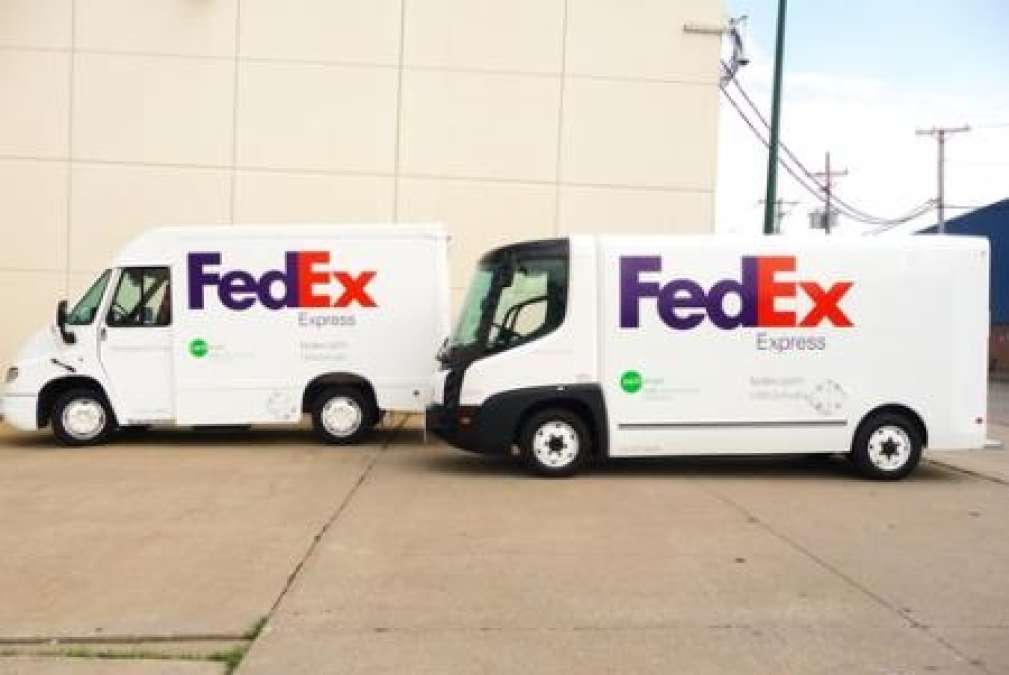FedEx Express is making rapid progress in fuel efficiency goals, announcing today that the FedEx Express fleet is 16.6 percent more efficient than it was in 2005. This means the company has nearly reached its 2020 goal of 20 percent efficiency improvement (20% by 2020, get it?), which wonders what the company will do as a second act.
The efficiency gains came by converting twenty percent of the FedEx Express diesel vehicle to more efficient and cleaner emission models, ones that comply with 2010 U.S. Environmental Protection Agency diesel emission standards.
“Although we are less than halfway to the end date we set for ourselves, we have achieved 80 percent of our vehicle fuel efficiency goal as of the conclusion of fiscal year 2011, compared to our original baseline set in 2005,” said Mitch Jackson, staff vice president of environmental affairs and sustainability, FedEx Corp. “As a result, we are reevaluating our 2020 goal to potentially raise the standard we originally set out to achieve.”
Dennis Beal, vice president of global vehicles, FedEx Express, said that “By pursuing the most promising avenues of advanced technologies, enlisting multiple experienced manufacturers and optimizing our vehicle operations, FedEx is reducing fuel use and emissions faster than expected.”
The efficiency gains are the result of several initiatives: A)) The company has added a number of all electric trucks, and is adding 87 more electric delivery trucks. B)) Adding 114 of the Reach step vans, manufactured by Utilimaster, that combines a lightweight aerodynamic body made of advanced composite materials, with a right-sized engine, to save up to 35 percent in fuel over comparable step vans. C)) FedEx Ground hybrid hydraulic parcel delivery vehicles that can reduce fuel usage by 40 percent. D)) Testing standard delivery vans retrofitted with all electric drive trains from a range of manufacturers, including AMP, Smith Electric and Freightliner Custom Chassis Corporation.
A big effort undertaken by FedEx Express is to accelerate purchase of vehicles with right-sized engines, such as the Sprinter vans. By the end of 2013 the company expects to have 11,000 of these vans, or more than 35 percent of the U.S. pick-up and delivery fleet. Each of these vans are 70-100% more efficient than the trucks they are replacing.
These efforts are not only helping FedEx Express reach environmental goals, but business goals to save money. Large fuel efficiency gains mean saving money on fuel that isn't burned in the process of delivering packages.
The company is aiming to not only help its own bottom line with more efficient trucks, but by experimenting with and adopting all electric trucks the company hopes to help jump-start an electric truck industry, one that could compete favorably with traditional gasoline or diesel trucks. “While we naturally want to improve performance and reduce costs for FedEx, we also want to see all-electric trucks become more affordable and reliable for everyone from your local pizza parlor to other small businesses that deliver,” said Jackson. “This is a strategy for reducing reliance on petroleum-based fuels in a much faster, more inclusive and impactful way.”
In part the motivating factor comes from the top. FedEx chairman and CEO Frederick W. Smith is co-chair of the organization Securing America’s Future Energy (SAFE), and has long been focused on using domestic energy sources, including electricity, to fuel trucks.
FedEx is deploying all-electric trucks in locations which include California (the San Francisco Bay area, Los Angeles, Orange County, San Diego and the Central Valley); suburban Washington, D.C. (Rockville, M.D.); New York City and several locations in Texas. The company is testing trucks from several manufacturers, in Chicago, in daily service on regular delivery routes, to accelerate the development of the vehicles and the EV industry.
Delivery fleet operators have an advantage in adopting electric trucks. The trucks can be charged at night, when electricity is low priced, and consume the electricity during the day driving the truck on its delivery route. There are many trucks driving fixed delivery routes where the total distance is well known, allowing the battery pack to be sized correctly to give enough driving range to cover the route.
“Electric drivelines have a tremendous potential, and we are seeing the benefits of integrating them into our fleet, but the technology is still in the early phase of the development cycle,” added Beal. “That’s why we are aggressively working with several truck manufacturers to fast-forward their products’ performance curve and affordability.”





